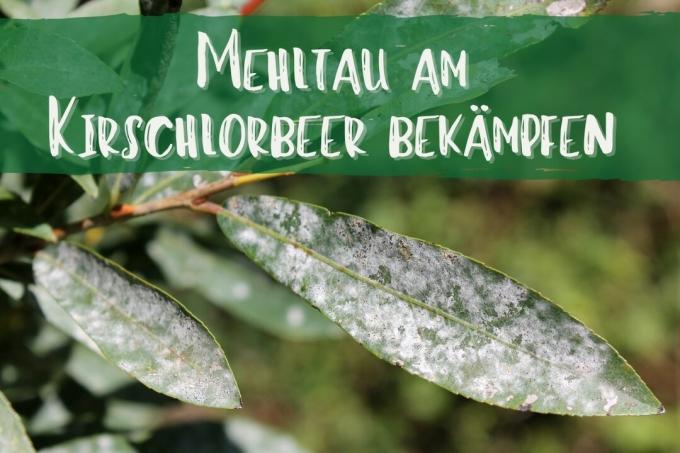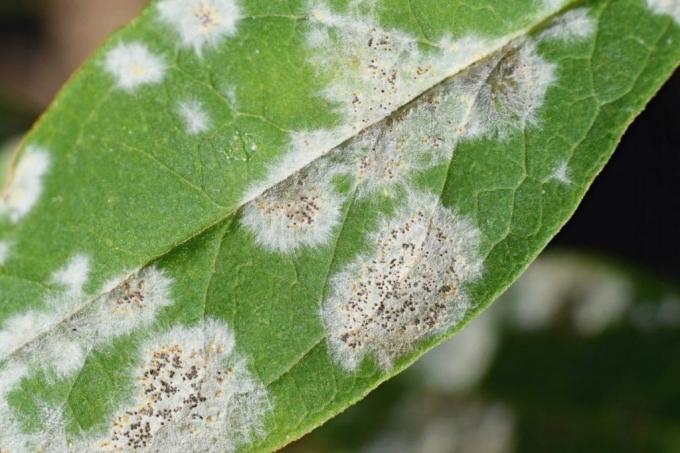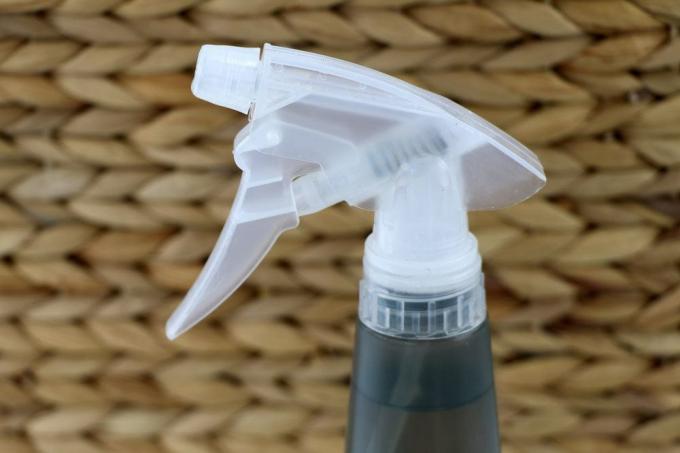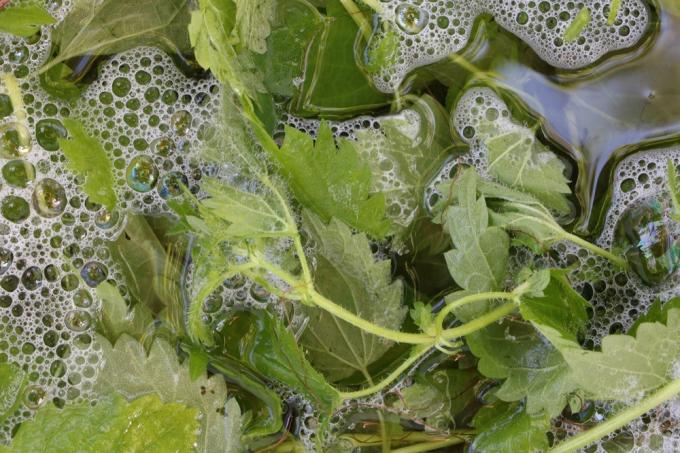
table of contents
- Powdery mildew is the most common fungal disease
- Recognize illness
- Care errors as causes
- Typical symptoms
- Fight it properly
- Use of fungicides
- Fight with home remedies
- Preventive measures
- frequently asked Questions
Cherry laurel is very popular in this country as a hedge plant. The evergreen shrub with large shiny leaves grows upright and extremely fast. However, cherry laurel is often attacked by powdery mildew.
In a nutshell
- powdery mildew mainly affects young leaves
- Signs of white floury coating on the underside of the leaves
- Remove infected parts of the plant
- Use of network sulfur preparations
- Avoid care mistakes
Powdery mildew is the most common fungal disease
The ever-popular shrub, the cherry laurel (Prunus laurocerasus) also known as laurel cherry, is very fast-growing, well tolerated by cutting, hardy and grows even under unfavorable conditions. It is therefore a welcome guest in gardens. However, the cherry laurel is not spared from fungal diseases like the dreaded powdery mildew. It is the most common disease in the cherry laurel. When the first signs appear, it is necessary to act quickly to avert more serious damage to the plants.
Recognize illness
Before tackling this fungal disease, the causes of its development should also be considered a little closer. The trigger for the disease is the infestation of the cherry laurel with the fungus Podosphaera tridactyla. A distinction can be made between real and downy mildew on cherry laurel. Both types can attack the shrub plant.
Powdery mildew
It is also known as the fair weather mushroom. The spores (conidia) get onto the leaves with the wind or spray water when watering. There they begin to germinate and finally penetrate the top cell layer of the leaf. A fungal network then forms, the mycelium. In summer the fruiting bodies (ascospores) develop on this. They overwinter on the plant in the shoot tips until next spring. The mushrooms appear from April to September. To grow, this powdery mildew needs:
- Temperatures of at least 10 to 12 ° C for germination and
- dry, warm weather, as well
- nocturnal dew formation

Wrong mildew
This type of powdery mildew usually occurs in autumn and can also affect cherry laurel. The mushrooms love damp and cool weather and are therefore also known as bad weather mushrooms. The spores swim on the damp leaves and penetrate into stomata on the underside of the leaves. They overwinter in shoot tips and in fall foliage.
Care errors as causes
In addition to the weather, a wide variety of mistakes in care can also favor the development of the fungus. Mainly, incorrect watering and fertilization can create good conditions for powdery mildew to spread. The biggest mistakes are:
- Nitrogen over-fertilization of the soil
- Lack of silicate
- wet the leaves when watering
- wrong location
- no air circulation to dry the leaves
- too little spacing between plants
- as a result, the humidity is too high
Note: The cherry laurel can easily be confused with the bay tree (Laurus nobilis), whose leaves are used as a spice. The leaves of cherry laurel, on the other hand, contain cyanogenic glycosides, which release hydrogen cyanide when chewed.
Typical symptoms
As a rule, the youngest leaves of cherry laurel are attacked by powdery mildew, while older leaves are spared. The following signs are characteristic of the "fair weather mushroom":
- young leaves and shoots are brightly colored
- from April floury white coating on the underside of the leaves
- later turns brownish to greyish
- can be wiped off
- visible changes in the leaves from mid-May
- Bulges and deformations on the upper side of the leaf
- affected areas initially yellow, later brown
- strong curling of the leaves is possible
- Tearing open the leaf tissue
- Crippling of the leaves
- sometimes one-sided curvature of the leaf
- Leaves stop growing
- in the advanced stage, infestation of young shoot tips, buds and fruits and
- Leaves turn brown, dry from the edge
- In addition, brown corking can appear on the underside of the leaf
- in the final stage, the upper parts of the shoot die off completely
Even with the bad weather fungus, the affected leaves die off over time. Violet, yellow or brownish discolorations appear on the leaf surface. As with the "fair weather mushroom", a whitish-gray fungus coating is also visible here on the underside of the leaf. Therefore, the two fungal diseases can quickly be confused. It is then advisable to examine the leaves carefully with a magnifying glass.
Tip: Mainly strong-growing and broad-leaved varieties such as "Etna", "Rotundifolia" or "Schipkaensis Macrophylla" are affected.

Fight it properly
If the first signs indicate that your cherry laurel is infected with powdery mildew, you need to act quickly to prevent the fungus from spreading further to other plants. The following measures can be helpful:
- remove affected leaves
- Cut back diseased shoots vigorously
- Cut back deep into the healthy wood
- if the infestation is very severe, remove the plant
- Do not dispose of infected parts on the compost
- Disposal in household waste
- Use of network sulfur preparations
Note: Chemical preparations based on copper or network sulfur are environmentally friendly. They will even be used in organic farming.
Use of fungicides
If nothing helps and the disease is already well advanced, only the use of fungicides will help. Are recommended
- Fungisan rose and vegetables mushroom-free or
- Duaxo
The preparations are diluted with water and sprayed on the plants. The sprayings should be repeated after 10 to 14 days. They can also be used in the following year from the end of March to the beginning of April to prevent re-infestation.
Fight with home remedies
Many hobby gardeners swear by the use of tried and tested home remedies to combat this dreaded fungal disease. Whether the treatment is always successful largely depends on the stage of powdery mildew on the cherry laurel. The best thing to do is to try it out for yourself. Are promising
Vinegar and water mixture
- 1 tablespoon apple cider vinegar
- 1 liter of water
- mix everything well
- put in spray bottle
- spray affected areas
- Use for several days in a row
- Treatment morning and evening
- not in direct sunlight
- Leaves can burn

Fresh milk
- do not use long-life milk
- Mix 1 part milk with 9 parts water
- Spray leaves / shoots well every other day
- Treat until the fungus dies
- Microorganisms in milk fight fungi
- at the same time, the sodium phosphate it contains strengthens the plant's defenses
As a preventive measure, treatment can also be carried out from April to the end of July. Initially, susceptible plants are sprayed once a week and then every two weeks. The bacteria contained in the milk multiply on the leaves and thus form a dense coating.
Preventive measures
Prevention is always better than cure. You should also know the causes of your cherry laurel infestation with powdery mildew. However, the following measures are not always a guarantee that the fungal disease will not break out, as it also depends on the weather. But there is the possibility of reducing the points of attack. The following should therefore be observed:
- correct choice of location
- sunny to partially shaded
- Planting resistant varieties
- enough planting distance
- different depending on the variety
- regular pruning
- no summer cut
- as newly emerging leaves are very vulnerable
- Cut back in autumn or early spring, at the end of February
- Avoid over-fertilization with nitrogen
- this softens plant tissue and allows fungus to penetrate easily
- Use potash-based fertilization
- Water the plants from below
- Watering in the morning or in the afternoon
- Leaves must be dry by night
- Keep the soil free of weeds and mulch
- Use of plant manure to strengthen the immune system
- Particularly suitable stinging nettle or horsetail broth

frequently asked Questions
To make nettle or horsetail broth, 1 kg of fresh or 150 g of dried leaves are required. These are soaked in 10 liters of water for 24 hours and then boiled and strained for 30 minutes. For pouring, the broth is diluted with five times the amount of water.
A garlic broth can also be used. To do this, 4 cloves of garlic are crushed and poured with a liter of hot water. Then let everything stand for a few hours, strain and spray the affected parts. Neem oil can also be used for treatment.
It's not poisonous. However, there may be allergic reactions such as breathing problems, itching or reddening of the skin, as well as stomach problems. Gloves and a face mask should therefore be worn when treating affected plants.



